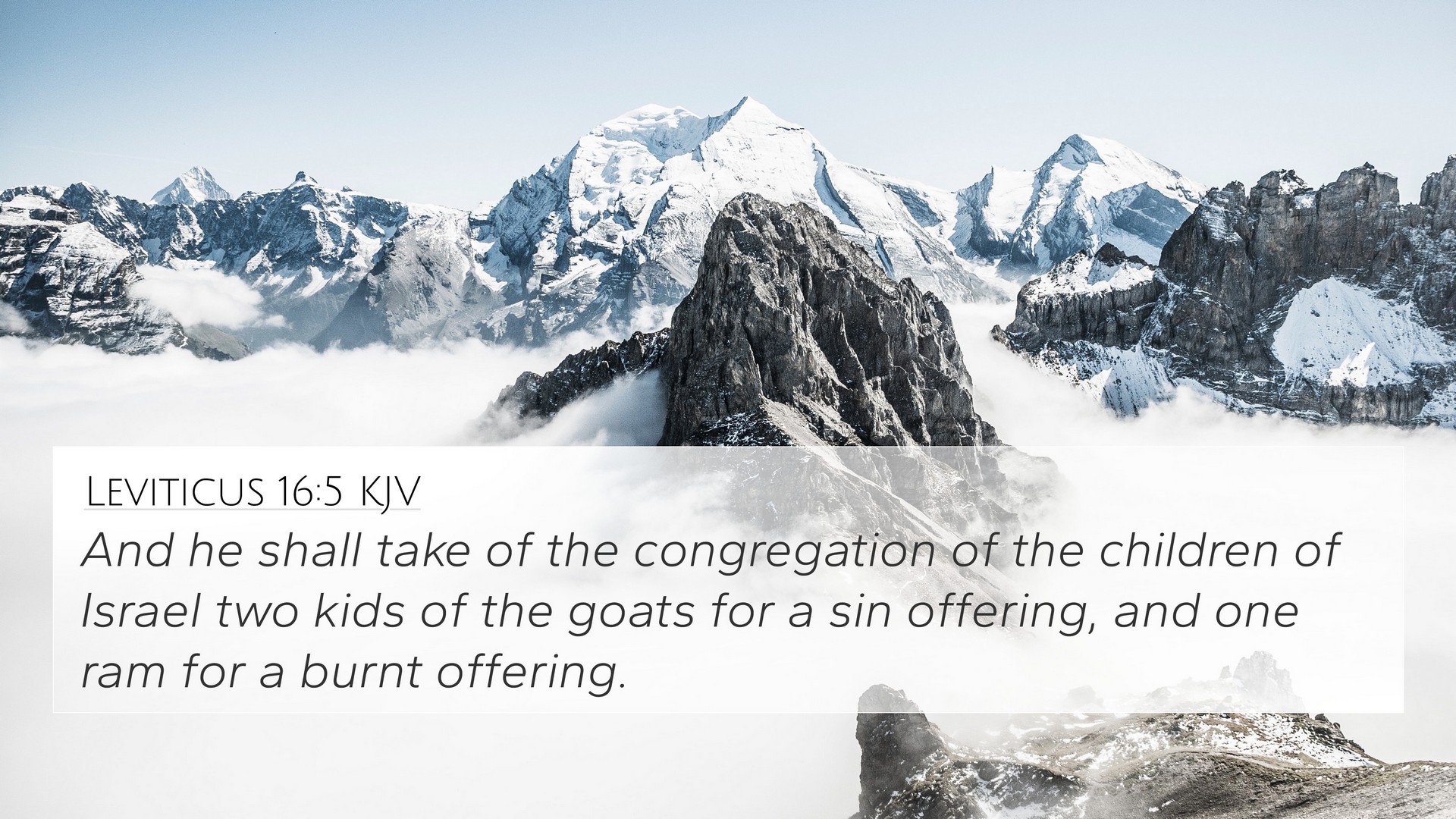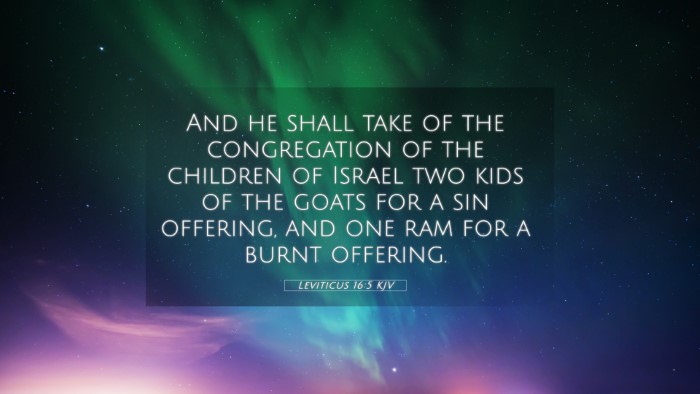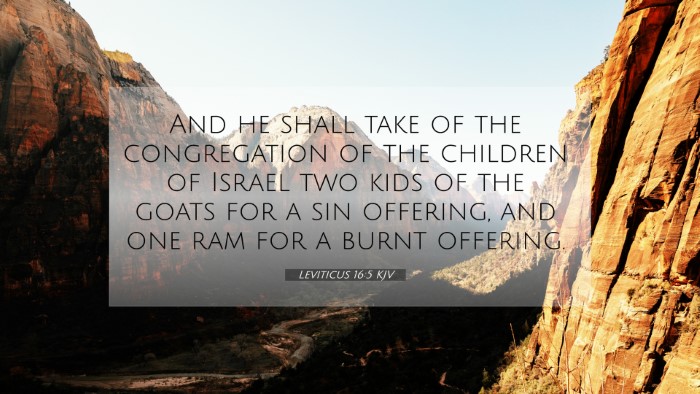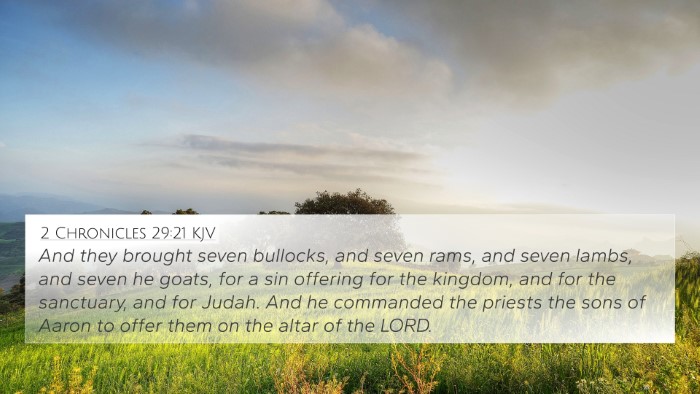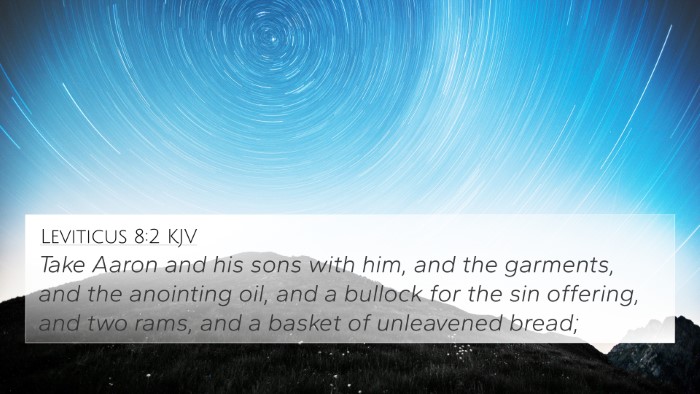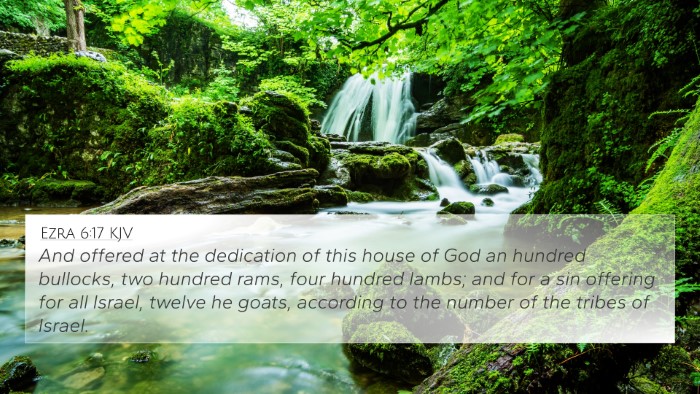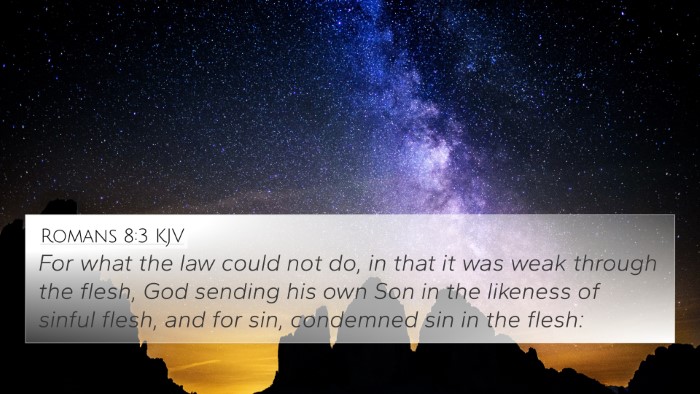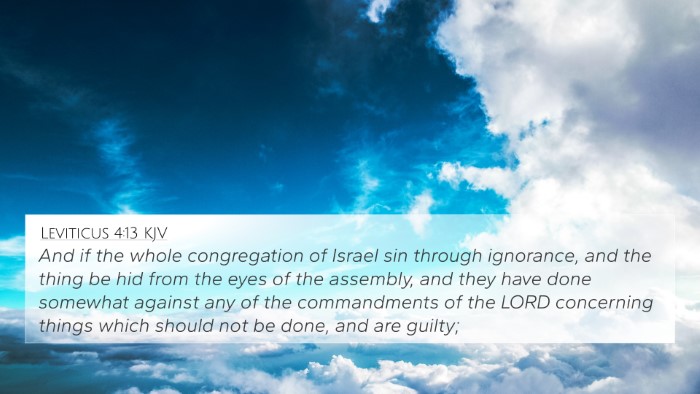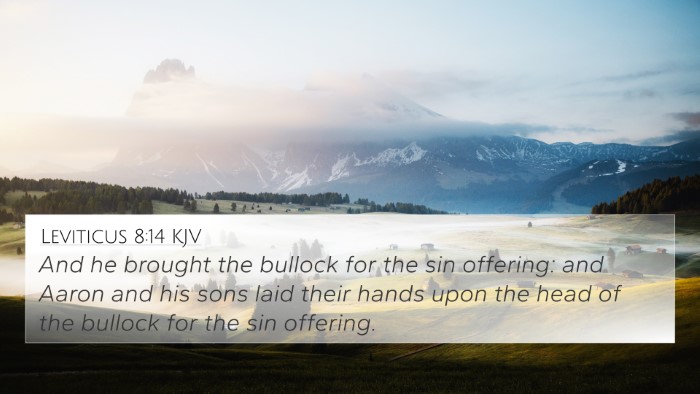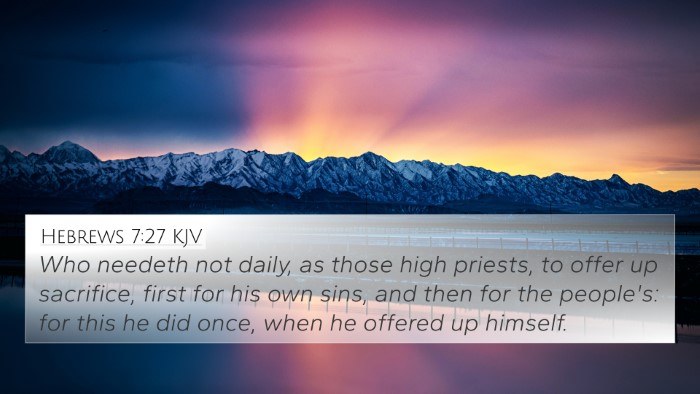Understanding Leviticus 16:5
Leviticus 16:5 states, "And he shall take of the congregation of the children of Israel two kids of the goats for a sin offering, and one ram for a burnt offering." This verse is a foundational aspect of the Day of Atonement rituals, outlining the requirements for sin offerings as prescribed to Israel's high priest.
Summary of Biblical Meaning
This verse emphasizes the process of atonement through sacrificial offerings, fundamental to understanding the relationship between God and His people. The two goats symbolize the dual nature of atonement - one goat is sacrificed, while the other is sent into the wilderness, representing the removal of sins.
Insights from Public Domain Commentaries
Matthew Henry's Commentary
Henry highlights the significance of the offerings, noting that the two goats serve as a representation of Israel's collective sinfulness. The sin offering acknowledges the need for a mediator and emphasizes the necessity of substitutionary atonement.
Moreover, he discusses the symbolism involved; one goat is a picture of punishment and death, while the other indicates that sins can be carried away, illustrating God's mercy.
Albert Barnes' Notes
Barnes elucidates that the choice of kids of the goats and a ram underscores God's provisions. He posits that the sin offering is not merely a ritual but a profound representation of the seriousness of sin and God’s holiness.
Barnes connects the offerings to themes of substitution and imputation, drawing a parallel to Christ’s ultimate sacrifice which fulfills the need for atonement once and for all.
Adam Clarke's Commentary
Clarke observes the communal aspect of the offerings, pointing out that the congregation's collective responsibility for sin is manifest. He augments this by stressing how the rituals form a bridge between sinful humanity and a holy God.
Moreover, he mentions the New Testament implications of this verse, where the act of atonement finds its fulfillment in Christ, thus establishing a link between Old Testament practices and New Testament theology.
Cross-Referencing Related Bible Verses
Leviticus 16:5 finds its theological and thematic connections throughout the Bible. Below are key Bible verses relevant to the understanding of this passage:
- Hebrews 9:22: "And almost all things are by the law purged with blood; and without shedding of blood is no remission."
- Isaiah 53:6: "All we like sheep have gone astray; we have turned every one to his own way; and the Lord hath laid on him the iniquity of us all."
- Romans 3:25: "Whom God hath set forth to be a propitiation through faith in his blood, to declare his righteousness for the remission of sins that are past..."
- 1 Peter 2:24: "Who his own self bare our sins in his own body on the tree, that we, being dead to sins, should live unto righteousness..."
- John 1:29: "The next day John seeth Jesus coming unto him, and saith, Behold the Lamb of God, which taketh away the sin of the world."
- Romans 5:8: "But God commendeth his love toward us, in that, while we were yet sinners, Christ died for us."
- Matthew 27:46: "And about the ninth hour Jesus cried with a loud voice, saying, Eli, Eli, lama sabachthani? that is to say, My God, my God, why hast thou forsaken me?"
Conclusion
Leviticus 16:5 serves as a pivotal verse in understanding the sacrificial system of the Old Testament and the foreshadowing of Christ’s ultimate sacrifice. Its connections with other Scripture provide deeper insights into the themes of atonement, sacrifice, and God’s redemptive plan.
The cross-references explored deepen our understanding and demonstrate how interwoven the narrative of Scripture is, revealing God's consistent call to redemption throughout history.
Further Study and Application
For a thorough understanding of Bible verse connections, utilize tools for Bible cross-referencing such as a Bible concordance or a Bible cross-reference guide. These resources can enhance your study and reveal the rich thematic connections laid throughout the Scriptures.
When exploring how to find cross-references in the Bible, consider the context and themes of verses to identify their interrelations effectively. By engaging in cross-reference Bible study, you are equipped to delve deeper into the Scriptures and understand God’s word in a more profound way.
